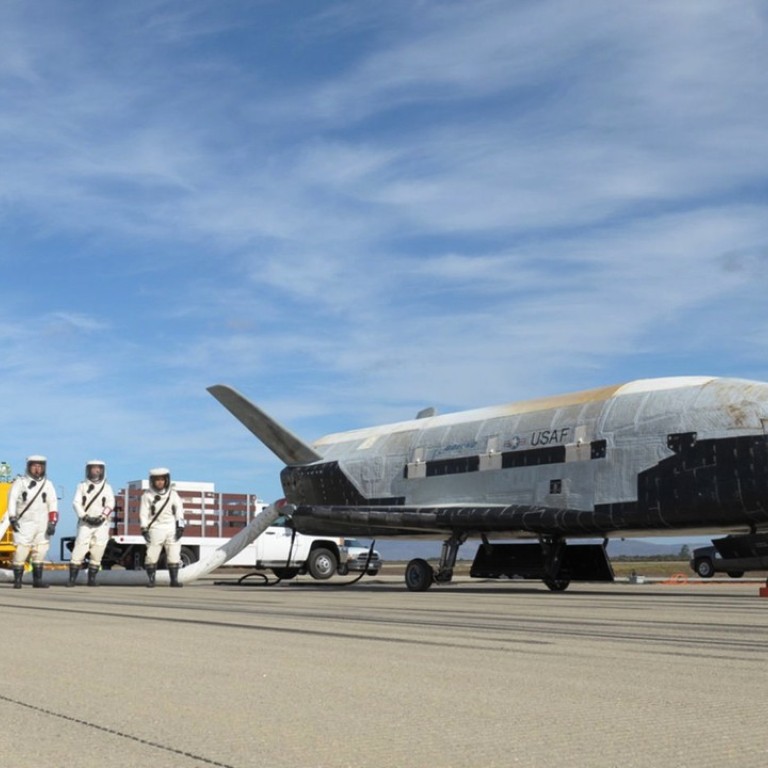
SpaceX launches the X-37B, the Pentagon’s top-secret miniature space shuttle
In the Pentagon’s vast arsenal there is little quite like it: a super-secret space drone that looks like a miniature version of the space shuttle, but orbits the Earth for months, even years, at a time. Doing what? The Air Force won’t say.
On the tarmac, the X-37B, as it is called, looks tiny, standing not much taller than a person. Its wingspan measures less than 5 metres, and it weighs in at just 5,000kg. But over the course of six flights, it has proved to be a rugged little robotic spacecraft, spending a total of nearly six years, probing the hard environment of the high frontier.

In other words, there’s no telling how long the thing will be up there.
There’s also no telling what the spaceplane will be doing.
On a fact sheet, the Air Force says that, “the primary objectives of the X-37B are twofold: reusable spacecraft technologies for America’s future in space and operating experiments which can be returned to, and examined, on Earth.”
On this flight, the Air Force will say only that the mission is to carry small satellites, “demonstrate greater opportunities for rapid space access and on-orbit testing of emerging space technologies.” The service also said it would test experimental electronics in a weightless environment.
But at a time when space is becoming a contested environment, having an orbiting spaceplane with the potential to keep a lookout on weather or the enemy or satellites, all while testing new technologies, could be highly beneficial.
The mission is also significant because it marked the first time SpaceX has been chosen to launch for the Air Force - a coup for the California firm started in 2002 by tech entrepreneur Elon Musk.
The launch took place as the Pentagon sounds the alarm about the importance of defending the ultimate high ground should war break out in space. More recently, the House has even pushed for the creation of a separate “Space Corps” within the Air Force designed to focus exclusively on the beyond.
The X-37B was launched on top of a SpaceX Falcon 9 rocket. SpaceX also successfully landed the first stage of its Falcon 9 rocket on a landing pad on the Cape - a bit of rocket artistry that Musk and others have said could help dramatically lower the cost of space travel. By now the feat is becoming routine for the company, which plans to reuse its boosters instead of throwing them away after each launch, as had been the traditional practice.
The launch represented a significant coup for Musk’s space company, which had been fighting to enter the national security launch market for years.
For nearly a decade, the United Launch Alliance, the joint venture between Lockheed Martin and Boeing, had a monopoly on Pentagon launches. SpaceX filed suit against the Air Force for the right to compete. In 2015, the parties settled and SpaceX was ultimately allowed to compete against ULA, opening up a potentially lucrative source of revenue. Since then, SpaceX has won two of three contested launch contracts.
“The benefit we’re seeing now is competition,” Air Force Secretary Heather Wilson said during a June Senate hearing. “There are some very exciting things happening in commercial space that bring the opportunity for assured access to space at a very competitive price.”

